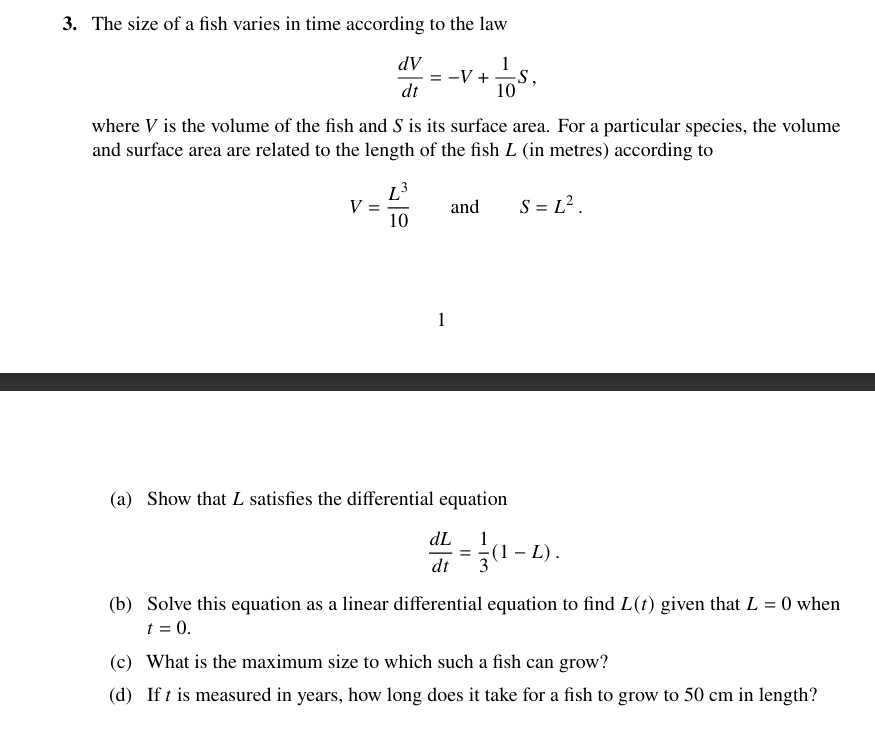Home /
Expert Answers /
Calculus /
i-would-love-a-solution-and-an-explanation-for-the-following-question-the-size-of-a-fish-varie-pa728
(Solved): I would love a solution and an explanation for the following question! The size of a fish varie ...
I would love a solution and an explanation for the following question! The size of a fish varies in time according to the law
(dV)/(dt)=-V+(1)/(10)S,where
Vis the volume of the fish and
Sis its surface area. For a particular species, the volume and surface area are related to the length of the fish
L(in metres) according to
V=(L^(3))/(10), and ,S=L^(2).(a) Show that
Lsatisfies the differential equation
(dL)/(dt)=(1)/(3)(1-L).(b) Solve this equation as a linear differential equation to find
L(t)given that
L=0when
t=0. (c) What is the maximum size to which such a fish can grow? (d) If
tis measured in years, how long does it take for a fish to grow to
50cmin length?
